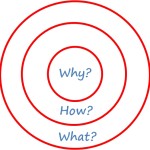Ever have that fear that if something happened to the church, or the church office you’d be in a world of hurt? UMCom released my March MyCom article on church online security. In there I pull together best practices, suggested websites/software, and other pitfalls of technology in the church office to avoid. It’s a bit lengthy, but it is worth your time to read if you are in the business of church.
Church Online Security
Backup data. Breyer asks, “If the church burns down, which happens more often than we’d like to think, what happens to your data?” In many cases, both the data and backups are housed only within the church premises. These solutions can provide more secure data backup.
- CrashPlan Pro backs up data in the cloud. At a cost of about $10 per computer, it is an affordable solution for churches working off one local server.
- DropBox is a great solution for smaller churches with less data. DropBox offers two gigabytes of free storage and boosts your free storage when you refer new users. Larger pro accounts cost $10 per month.
- Check out “Avoid computer nightmares with free and paid backup solutions” for more options.




